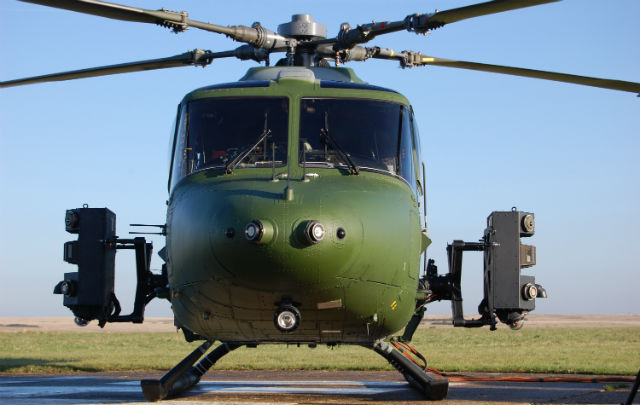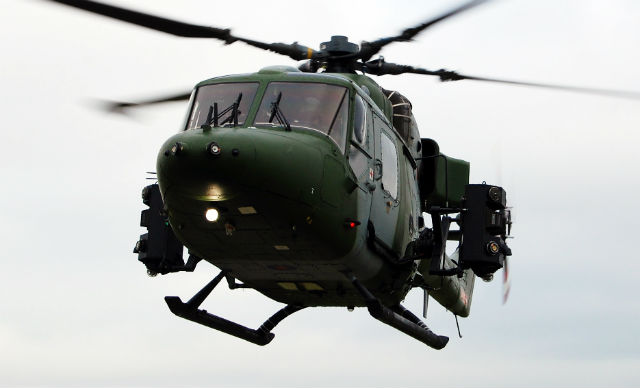A new integrated defensive aids system architecture intended to more effectively protect the UK's military helicopters from attack using surface-to-air missiles has been tested, as part of a three-year technology demonstration effort launched in early 2010.
Tested over the Salisbury Plain training area in Wiltshire, southern England, the common defensive aids system (CDAS) equipment was installed on a British Army AgustaWestland Lynx AH7 trials aircraft. Mounted on either side of the helicopter using external pylons, the package comprised "integrated infrared, laser and ultraviolet sensors and a compact directed infrared countermeasures effector", the UK's Defence Science and Technology Laboratory (Dstl) says.
 |
|---|
|
Both images: Crown Copyright |
Led by Selex ES and also involving BAE Systems, Qinetiq and Thales, the CDAS technology demonstrator programme is valued at £24 million ($36.4 million). The initiative has resulted in an open-architecture design and common interface, which its developers say will enable "sensors and countermeasures to be fitted more easily, allowing rapid enhancement to the protection of frontline aircraft, against future, more challenging threats".
Noting that "the [CDAS] project team is now analysing the flight data", Dstl says the integrated DAS architecture could also have future applications in helping to protect land vehicles and maritime platforms.
Source: Flight International












































